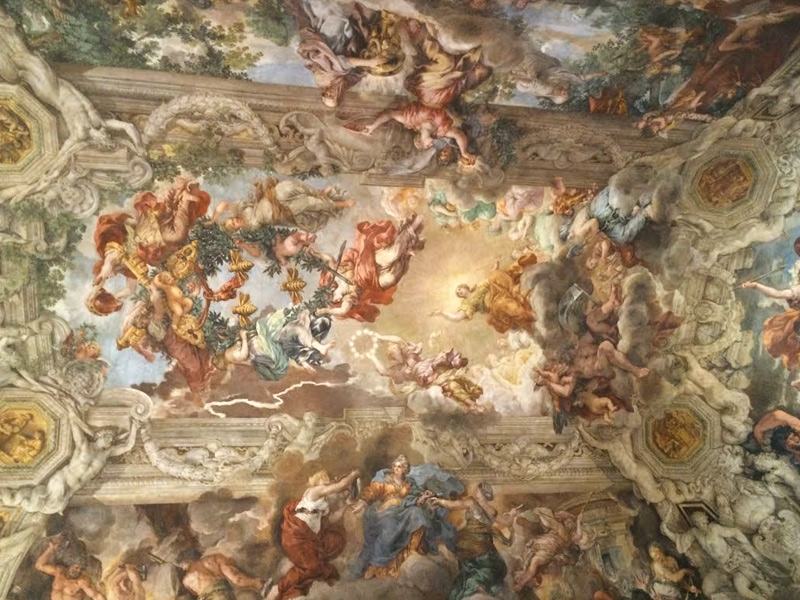When we think of Rome it’s most likely ancient ruins of the empire or the High Renaissance in full swing at the Vatican with Michelangelo that come to mind. But the overwhelming visual style of this city – from fountains to churches to piazzas – is the Baroque born a century later. It is everywhere. There is an entire art movement that cries out for attention in Rome – literally. It is big, showy, golden and opulent and it is born out of one of the most turbulent periods in European History.
The art historical narrative in a nutshell, flippantly told here for brevity, is that the Renaissance was all about reconnecting with the classical world. The Papacy had asserted its power over the 1000 years since the fall of the Roman Empire and a city of rich and powerful men became increasingly cultured. They were reading classical authors, discovering and cherishing lost classical sculptures like the Laoccon and paying attention to the ruins of a past civilization that had been hidden, sometimes in plain sight like the Pantheon. The Renaissance was a rebirth of art, glorifying the brilliance of mankind in the Catholic age.
But it wasn’t all poetry reading parties in front of the Dying Gaul – this was an era of power hungry states, serious wealth in private hands and the Cult of the Individual (in other words rich, power hungry men campaigning in the name of God). Ultimately, the church divided in a period of extreme violence and upheaval. The Protestant reformer Martin Luther and his troops sacked the city of Rome and did violence to its people as punishment for their arrogance and waywardness from the word of the Bible. Catholic Rome was battered and bruised and limped through a few decades, chastising any aspects of culture that did not conform to a stricter, harsher regime that had self preservation at the top of the priority list.
As anyone who has been on a diet on a budget will tell you, sometimes when you are deprived you end up falling off the bandwagon in spectacular fashion. And that’s what the Baroque represents. After decades of Reformation, rules – looking over your shoulder before you painted an attractive or nude saint, – came breaking the rules – loudly. The Catholic Church had survived. Self preservation caved in and instead came self proclamation. Let’s show the world who we are, come back bigger and better. And more golden and more bling. That’s the message of St Peters. Plastered over the top of a century of Renaissance development is a big billboard for the new regime. It says we are powerful, we are rich, we are right and we are not going anywhere. The Baroque is a complete expression of this new age in painting, architecture, sculpture and music.
It was a period and a style of art that took me a while to devote time to. To be honest I resisted it at first. Instead, I loved the human quality of the Renaissance – the proportion, the intimacy and the harmony. I set aside my reservations though, knowing that Michelangelo was there whenever I needed to come up for air. In the past months I have fought my way through the loud, the bling and frankly the oppressive aspects of Baroque art and architecture. By which I mean suffocating interiors dripping with oversized cherubs, gold leafed to an inch of their lives and paintings of big bodies writhing as they ‘over act’ religious scenes. Once I got past them I felt stronger and better equipped to seek out the aspects of Baroque that made more sense to me, that spoke to me.
My Baroque gems will follow in a series of devoted musings. The best thing about most of them is they are all hiding in plain sight in Rome. There are entire Baroque palaces and churches, under visited and groaning with masterpieces from the ancients to the moderns. No tourists, no queues. I am often left alone reappraising and slowly but surely shaking off my Baroque hostility and prejudices.


Leave A Comment